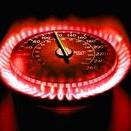VAG - 1.4 TSI con Cilindri Disattivabili
-
Contenuti simili
-
Scelte strategiche Gruppo VAG 1 2 3 4 107
Pubblicato da 4200blu,
- italdesign
- jetta
- (e 15 altri in più)
- 1064 risposte
- 173291 visite
-
VAG - Nuovo 3 cilindri 1.0 TSI - 200 kW 1 2 3
Pubblicato da dindi,
- vag tecnologia
- tsi
- (e 5 altri in più)
- 24 risposte
- 12013 visite
-
- 3 risposte
- 2149 visite
-
-
-














.thumb.jpg.46228d717c405acd43b45b79fddce6a4.jpg)




Messaggi Raccomandati:
Crea un account o accedi per lasciare un commento
Devi essere iscritto per commentare e visualizzare le sezioni protette!
Crea un account
Iscriviti nella nostra community. È facile!
Registra un nuovo accountAccedi
Sei già registrato? Accedi qui.
Accedi Ora